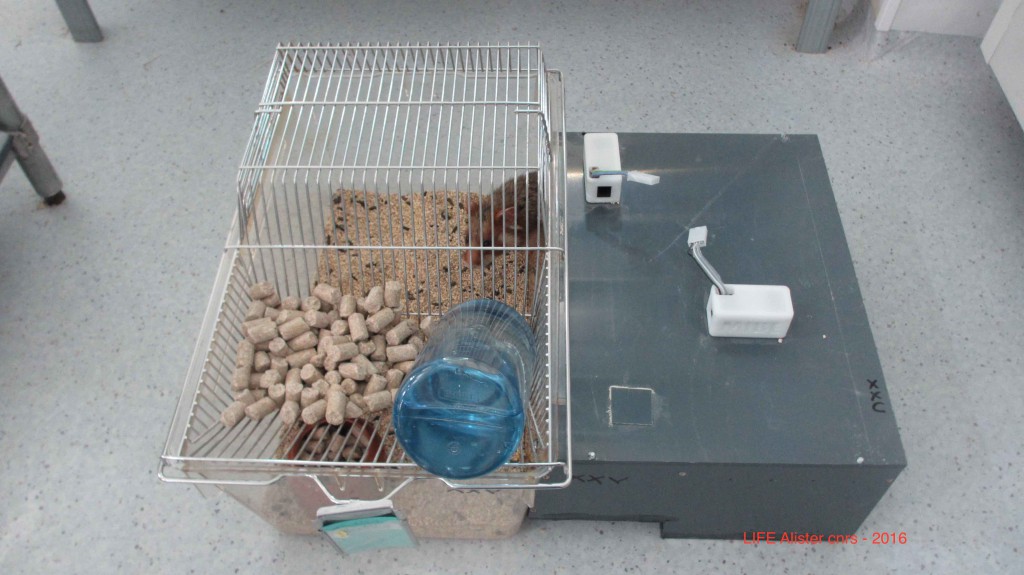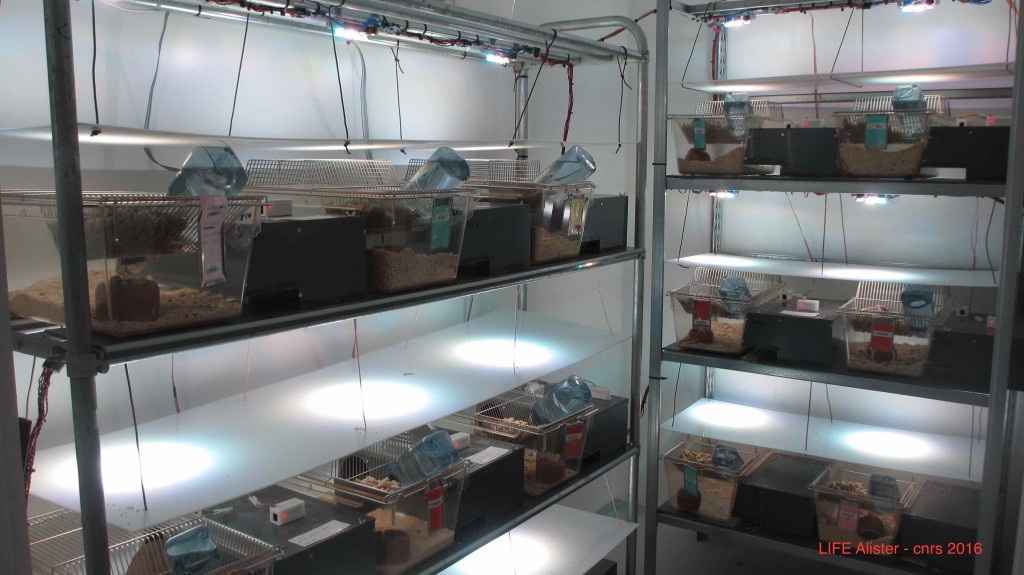Does lighting pollution impact the physiology and behaviour of European Hamsters?
12 octobre 2016During their LIFE Alister Project visit, Mrs Païva Rauma, in charge of the financial aspects and Mr Simon Goss, in charge of the technical aspects of the LIFE unit at the European Commission (see his portrait here) visited the CNRS facilities (IPHC-DEPE).
In the framework of the A5 action a study is currently taking place to determine with precision the impact of anthropic nuisances (mainly artificial nocturnal light) on the survival of the species. Recent data on the impact of lighting pollution (cf. Report on lighting and biodiversity, July, 2015), and urban noises on animal species suggests that these nuisances could possibly hamper individual development. Negative effects of lighting pollution on the breeding success were recently highlighted in mouse lemurs* (Le Tallec et al., 2015). We also know that too heavy of an exposure to light leads to (according to the species), a loss of hearing, higher stress hormone levels, hypertension and a partial or total masking of information (Barber et al., 2009).
Hamsters are nocturnal animals that supposedly avoid zones with light and require total darkness for hormonal constraints; the question of the impact of public lighting on their physiology is thus a crucial one. Do these specific lighting conditions disturb their hibernation cycles? Do reproduction rates go down?
Before considering introducing animals into the urban periphery, the effects of nocturnal pollution must firstly be assessed in a controlled environment.
Results of this study, if positive, will establish the first elements of the Welcoming the European Hamster Guide, which will be written by the CNRS, for “Hamster Friendly” communities.
Hamsters are currently being raised under conditions which reproduce the intensity of light found in public lighting. They have an artificial burrow (the small grey box), but must leave it to find food. A second population is raised in the same way in another room without nocturnal light; this is the “control” population for this experiment.
*a type of lemur






